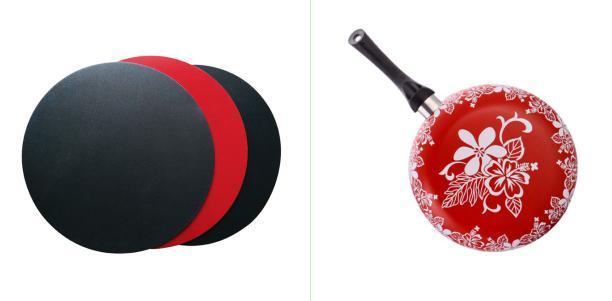The Difference Between Anodized and Color Coated Aluminium Circles

Aluminium circles are widely used across various industries, including kitchen appliances, automotive parts, and electronics. Two common surface treatments for these aluminium circles are anodizing and color coating. While both processes enhance the material’s durability and aesthetic appeal, they differ significantly in terms of appearance, protection, and applications. Understanding these differences is crucial for manufacturers and consumers who want to select the right type of aluminium for their needs.
Anodized Aluminium Circles
Anodizing is an electrochemical process that converts the aluminium surface into a durable, corrosion-resistant oxide layer. This layer is naturally integrated into the metal, making it highly resistant to scratches, wear, and environmental damage. Anodized aluminium circles often have a metallic, slightly textured appearance, which gives them a premium look and a subtle sheen.
One key advantage of anodized aluminium is its longevity. Since the protective layer is part of the metal, it does not peel, chip, or flake over time. Anodized circles are also resistant to ultraviolet (UV) light, making them ideal for applications exposed to sunlight or high heat, such as kitchen appliance panels or outdoor equipment. Additionally, the anodizing process can create a range of colors by incorporating dyes, but these tend to be more muted and metallic compared to vibrant painted finishes.
Color Coated Aluminium Circles
Color coating, on the other hand, involves applying a layer of colored paint or powder on the surface of the aluminium circle. Unlike anodizing, this coating sits on top of the metal rather than becoming part of it. This allows for a broader spectrum of colors and finishes, including glossy, matte, or textured effects. Manufacturers can achieve precise color matching to align with brand aesthetics or consumer preferences.
While color coated aluminium circles are visually versatile, the coating can be more susceptible to scratching, chipping, or fading if not properly treated. To counter this, high-quality coatings often include additional protective layers or curing processes to improve durability. These circles are especially popular in kitchen appliances, where design flexibility and vibrant aesthetics are critical.
Key Differences
The primary differences between anodized and color coated aluminium circles lie in durability, appearance, and application:
Durability: Anodized aluminium has an integrated protective layer that is highly resistant to wear, while color coated aluminium relies on an external layer that can be damaged if exposed to harsh conditions.
Appearance: Anodized finishes are metallic and subtle, with limited color options, whereas color coatings can be bright, glossy, or matte and allow for more creative expression.
Application: Anodized circles are often chosen for industrial or high-wear uses, while color coated circles are preferred in consumer-facing products, particularly in home appliances where aesthetics are key.
In conclusion, both anodized and color coated aluminium circles offer unique advantages depending on the application. Anodized aluminium excels in durability and resistance to environmental factors, while color coated aluminium circles provide limitless design possibilities and vibrant aesthetics. Selecting the right option requires balancing functional requirements with visual preferences, ensuring the final product meets both performance and design standards.
- Art
- Causes
- Crafts
- Dance
- Drinks
- Film
- Fitness
- Food
- Jogos
- Gardening
- Health
- Início
- Literature
- Music
- Networking
- Outro
- Party
- Religion
- Shopping
- Sports
- Theater
- Wellness


